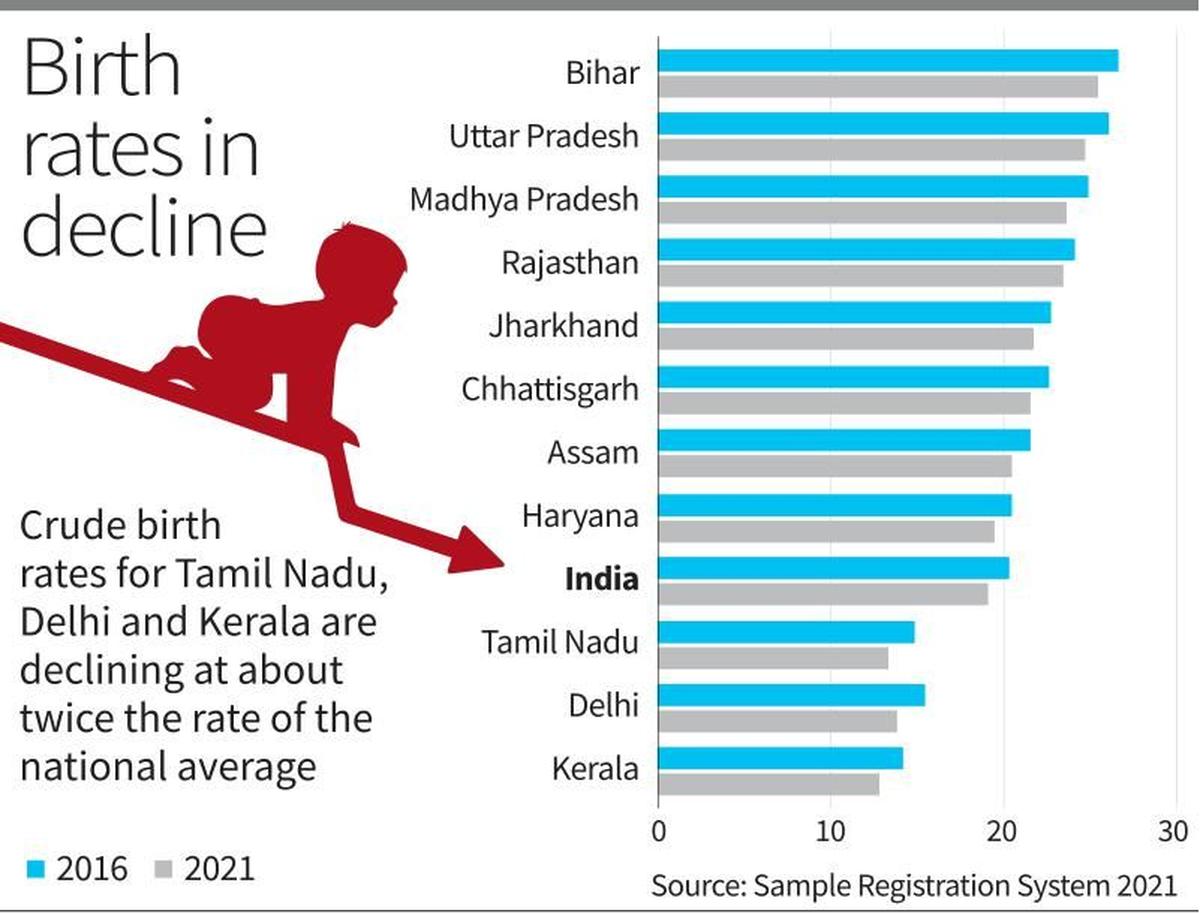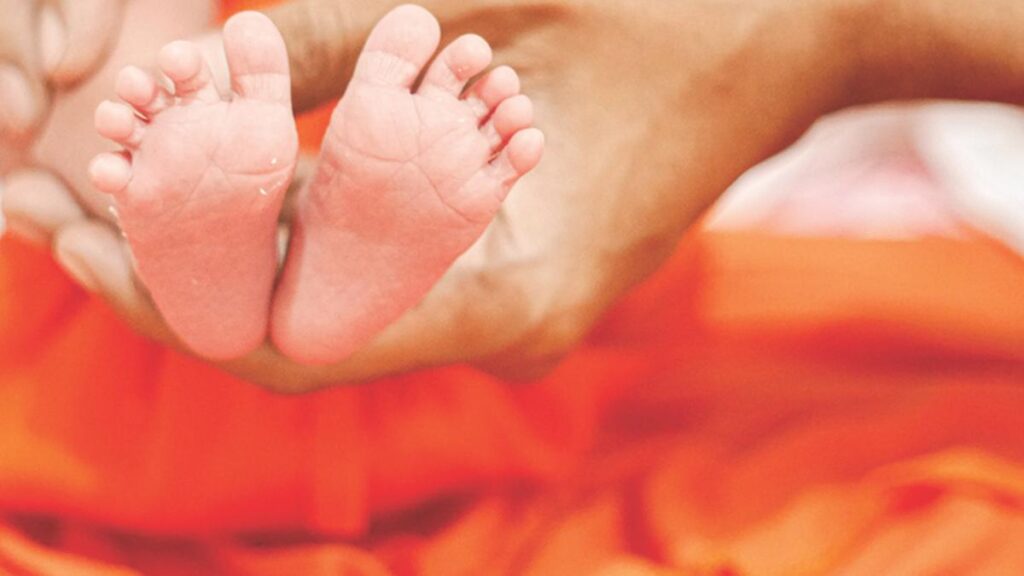The annual crude birth rates (live births per 1,000 people in the population) for Tamil Nadu, Delhi and Kerala are declining at twice the rate of the national average, showed data from the Sample Registration System (SRS) Statistical Report 2021, released by the Registrar General of India last week.
The SRS 2021 data showed that the all-India crude birth rate was 19.3 in 2021, dropping at a rate of 1.12% every year from 2016 to 2021. In comparison, in the same period, the birth rate for Tamil Nadu has been declining at a rate of 2.35% every year, Delhi’s has been declining at a rate of 2.23% and Kerala’s is dropping at a rate of 2.05%.

The data showed that the slowest rate of decline in birth rate was seen in States such as Rajasthan (0.48%), Bihar (0.86%), Chhattisgarh (0.98%), Jharkhand (0.98%), Assam (1.05%), Madhya Pradesh (1.05%), West Bengal (1.08%), and Uttar Pradesh (1.09%). The data further revealed that Uttarakhand was the only State which saw a rise in birth rate in this period.
The birth rates data from the SRS 2021 further revealed that the rate of decline was faster than the national average for 13 large States and union territories. All southern States — Andhra Pradesh (1.26%), Telangana (1.67%), Karnataka (1.68%), Kerala, and Tamil Nadu — featured among these 13 large States and union territories.
Population trends
The SRS is the largest demographic survey in the country, meant to provide annual estimates on fertility and mortality indicators such as birth rates, death rates, etc. Conducted in 8,842 sample units all over India with a sample size of about 84 lakh, the 2021 SRS survey data gave a picture of population trends that have usually been read with figures reported in decadal Censuses. The 2021 Census has not yet been conducted.

Apart from the southern States, birth rates were seen declining faster than the national average for Maharashtra (1.57%), Gujarat (1.24%), Odisha (1.34%), Himachal Pradesh (1.29%), Haryana (1.21%), and Jammu and Kashmir (1.47%), with Punjab’s birth rate declining almost at the same rate as that of the national average.

Corresponding to this data set in the SRS 2021 Statistical Report, the Civil Registration System 2021 dataset showed that some of the States seeing the slowest decline in birth rates are also reporting increasing number of registered births.
The Vital Statistics Report based on CRS 2021 showed that the number of registered births were seeing a rise in about 11 States and union territories, which included Bihar, Rajasthan, Uttar Pradesh, Uttarakhand, West Bengal, Jammu and Kashmir, Ladakh, Lakshadweep, Arunachal Pradesh, Mizoram and Nagaland.
The CRS 2021 dataset further showed that in the southern States of Andhra Pradesh, Tamil Nadu, Karnataka, and Kerala, the number of registered births has been on the decline since at least 2012, with Andhra Pradesh seeing a slight uptick in 2021. Telangana’s registered births saw a sharp uptick after 2019 but following 2020, there was a dramatic drop in these numbers.
The SRS 2021 data on total fertility rate (TFR) and gross reproduction rate (GRR) too correspond to the birth rate data — showing that States such as Bihar, Uttar Pradesh, Rajasthan, Madhya Pradesh had a TFR and GRR higher than the national average.
The TFR measures average number of children expected to be born per woman during her entire span of reproductive period. While India’s TFR stood at 2 in 2021, Bihar reported a TFR of 3, Uttar Pradesh had a TFR of 2.7, Rajasthan’s TFR was at 2.4 and Madhya Pradesh’s was 2.6.
Similarly, the GRR for India stood at 1, meaning that on an average, each woman in India is having one daughter who survives to reproductive age and has children of her own, according to the SRS 2021. In Bihar, Rajasthan, Madhya Pradesh, and Uttar Pradesh the GRR was significantly higher than the India average — at 1.4, 1.2, 1.2, and 1.3 respectively.
However, for West Bengal, which reported rising registered births and amongst the slowest decline in crude birth rates, the TFR stood at the lowest among bigger States and union territories at 1.4 and so did the GRR, which was at 0.7.
Published – May 14, 2025 11:41 pm IST

